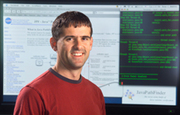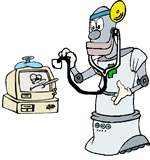5th International Workshop on Automation of Software Test
3-4 May 2010
Co-located with the ACM/IEEE 32nd International Conference on Software Engineering (ICSE 2010) held in Cape Town, South Africa
|
Finding Important Bugs is not Easy
Willem Visser
3 May 2010 |
High-ROI Customer Relevant Automated Testing
Steve Quam 4 May 2010 |

|
Finding Important Bugs is not EasyWillem Visser (Stellenbosch University, South Africa)3 May 2010 |
|
Abstract: Over the past 20 years I went from thinking model checking is the best thing since sliced bread for finding important bugs, to thinking that I'm not even sure anymore which bugs are important, never mind which tool can or should find them. During my time at NASA every bug was considered important, and in some ways that was the case, since a bug at the wrong time could cause a catastrophic mission failure. After NASA I spent a few years at a fast-paced startup (SEVEN Networks), where it suddenly was not at all obvious which bugs are important. The problem is, there are just a few companies with NASA's risk profile, whereas there are many companies like SEVEN. Even more problematic is that academia is spending much more time working on techniques and tools to address the typical NASA issues. For example, techniques like model checking, theorem proving, static analysis and model-based testing plays almost no role in a company like SEVEN. In this talk I'll explain why. I'll also highlight some of the issues that we did face at SEVEN and how we typically found them. Lastly, I'll discuss how my experience at SEVEN is influencing my research now that I'm back in academia at Stellenbosch University. |
|
Biography: Willem Visser, PhD, is full professor and head of Computer Science at Stellenbosch University, South Africa. Before joining Stellenbosch in 2009, he spent 8 years at NASA Ames Research Center, where he was the research lead for the Java PathFinder project. After NASA, he spent 2 years at SEVEN Networks, a leader in the mobile email domain, where he was the performance test lead and had the pleasure to be considered part of the engineering, production and marketing team, all at the same time. His research interests include, model checking, testing, and symbolic execution for test generation. He has been co-chair of ASE in 2008 and the ICSE Experience Report track in 2010 and has been a member of a large number of software engineering and formal methods conference program committees over the years, including currently, ASE, FASE, ICSE, ISSTA, SEFM, SPIN, RV and VSTTE. [Back to Top] |
|
|
High-ROI Customer Relevant Automated TestingSteve Quam (Siemens Medical Solutions, USA)4 May 2010 |
|
Abstract: Often in the process of fulfilling the verification of engineering-level design specifications, we actually forget why and for whom we are testing our products. At the end of the day, it is actually the end-users, our customers, who are the judges of the overall usefulness and quality of our products, not the engineers. In this presentation, the audience will be given insight on how to incorporate a true customer-focus into your automated testing. The concepts are not based on theory, but instead come from actual project implementations on computer-based workstations, million-dollar cardiac medical labs, and other complex devices. Most importantly, you will be shown how all of these ideas can be quantitatively measured for progress and accomplishment can be done in a stepwise approach. The main topics covered in this presentation include (but are not limited to):
These successfully proven techniques have been in actual use on projects ranging from small (10 person) all the way to large (200+ person) projects. They have also stood the test of time on global projects spanning teams which co-develop products between the United States, India, and Germany. |
|
Biography: Steve Quam is the Vice President of Engineering for Imaging Systems and Recording Systems in the Angiography Division of Siemens Medical Solutions. He has over 20 years experience leading various technical disciplines in the Defense and Medical industries. He has experience in Process Improvement, Software Off-shoring, and Project Management. He helped lead the first Siemens Medical to group to achieve CMM level 4, and has also helped lead another organization to CMMi level 3. Steve received a degree in Electrical Engineering and a major in Computer Science from the University of Wisconsin - Madison. In addition he has received a General Management Certificate from Kellogg School of Management. [Back to Top] |

